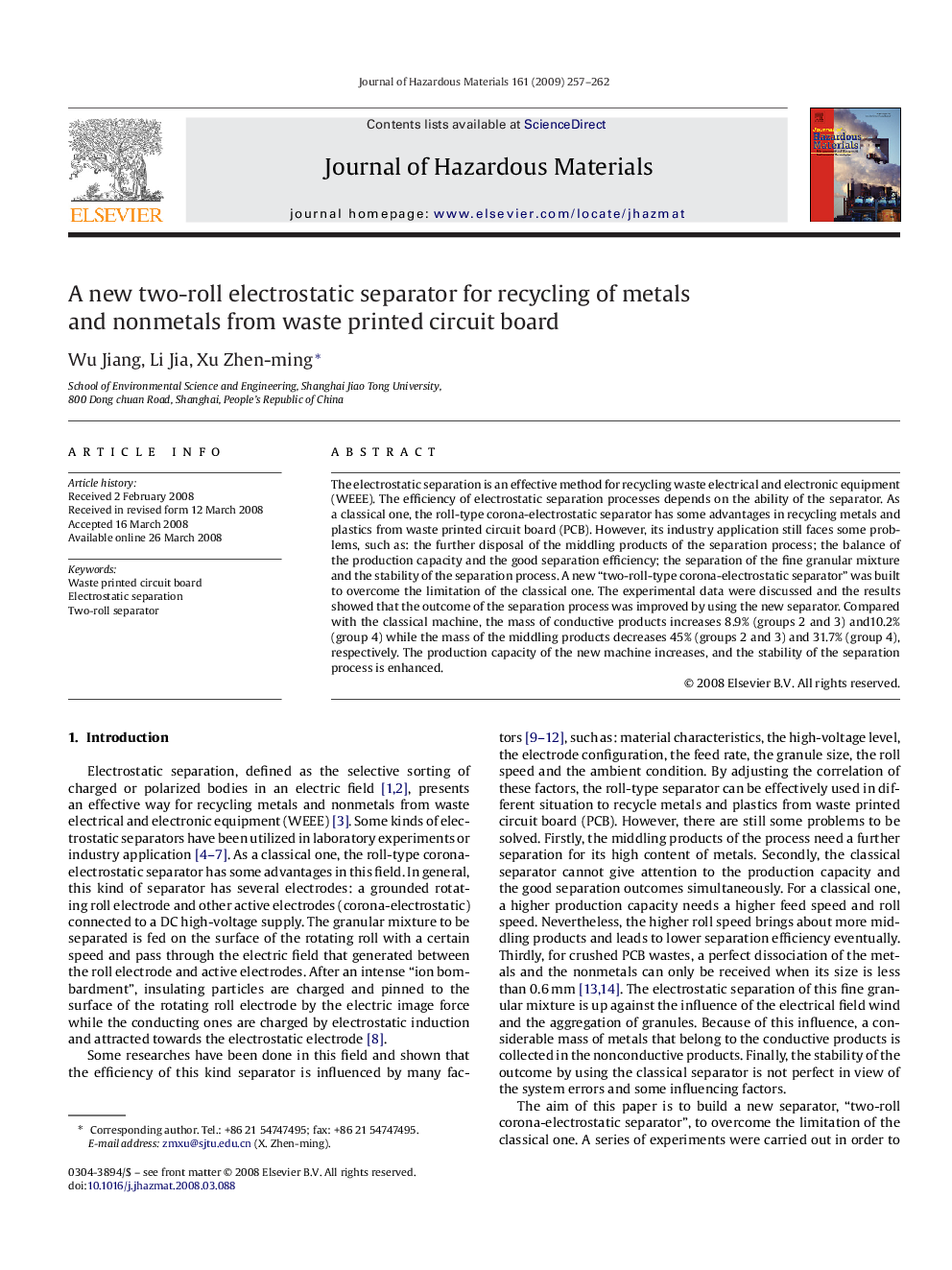| Article ID | Journal | Published Year | Pages | File Type |
|---|---|---|---|---|
| 581489 | Journal of Hazardous Materials | 2009 | 6 Pages |
Abstract
The electrostatic separation is an effective method for recycling waste electrical and electronic equipment (WEEE). The efficiency of electrostatic separation processes depends on the ability of the separator. As a classical one, the roll-type corona-electrostatic separator has some advantages in recycling metals and plastics from waste printed circuit board (PCB). However, its industry application still faces some problems, such as: the further disposal of the middling products of the separation process; the balance of the production capacity and the good separation efficiency; the separation of the fine granular mixture and the stability of the separation process. A new “two-roll-type corona-electrostatic separator” was built to overcome the limitation of the classical one. The experimental data were discussed and the results showed that the outcome of the separation process was improved by using the new separator. Compared with the classical machine, the mass of conductive products increases 8.9% (groups 2 and 3) and10.2% (group 4) while the mass of the middling products decreases 45% (groups 2 and 3) and 31.7% (group 4), respectively. The production capacity of the new machine increases, and the stability of the separation process is enhanced.
Related Topics
Physical Sciences and Engineering
Chemical Engineering
Chemical Health and Safety
Authors
Wu Jiang, Li Jia, Xu Zhen-ming,
